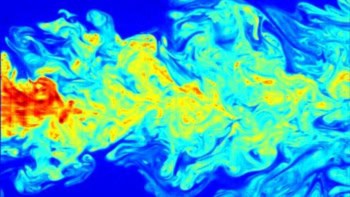
By using a satellite that fires the Earth with laser pulses from space, a researcher in the US has created the first global map of forest height. It is hoped that the project can improve climate models by providing a more accurate estimate of the amount of carbon dioxide locked up in the world’s trees.
There are many maps of the world’s forests generated from traditional ground-based surveying techniques as well as observations from space. But while these provide accurate estimates of woodland area they provide only limited estimates of the height of forest canopies.
Michael Lefsky, a geophysicist at Colorado State University, has now produced an accurate map of both these dimensions using a technique known as Light Detection and Ranging (LIDAR). This involved firing a laser beam towards Earth’s surface from space then measuring the time delay between the transmission of the pulse and the detection of the reflected signal to estimate tree heights. Using NASA’s ICESat satellite more than 250 million laser pulses were fired at and retrieved from the tops of trees over a seven-year period.
Narrow survey
Despite the volume of data, the LIDAR measurements only covered around 2.4% of the planet’s forested area, given the narrowness of each survey. So to complete his map Lefsky merged the LIDAR data with measurements taken using the Moderate Resolution Imaging Spectroradiometer (MODIS) aboard NASA’s Terra and Aqua satellites, which scans much broader swathes of the Earth’s surface.
The map reveals that the world’s tallest trees are clustered in the Pacific Northwest of North America and parts of southeast Asia, where temperate conifer forests contain redwoods and sequoias that frequently soar above 40 metres. Shorter boreal forests sprawl over large parts of northern Canada and Europe, where canopies of spruce, fir and pine are typically less than 20 metres.
“This is a really just a first draft, and it will certainly be refined in the future,” says Lefsky, who intends to develop the project by acquiring more accurate measurements of forests and biomass. This may be possible using more advanced LIDAR technologies that would form part of NASA’s Deformation, Ecosystem Structure and Dynamics of Ice (DESDynI) satellite, which will launch by a latter part of this decade.
Missing carbon
The forest-height map could aid the ongoing effort to estimate the amount of carbon tied up in Earth’s forests and to explain what sops up 2 billion tonnes of “missing” carbon each year. Humans release about 7 billion tonnes of carbon a year, mostly in the form of carbon dioxide. Of that, 3 billion tonnes end up in the atmosphere and 2 billion tonnes in the ocean. It is unclear where the last two billion tonnes of carbon go, though scientists suspect that forests capture and store much of it as biomass through photosynthesis.
Taylor Perron, a geophysicist at Massachusetts Institute of Technology (MIT), who uses LIDAR in his own research into Earth surface processes, believes that the project will have wide implications for climate science. “This map will help improve estimates of how much forest biomass exists in different regions, a key step in assessing how forests will respond to increasing atmospheric CO2 concentrations,” he says.
Perron also points out there will be increasing demand for space-based observation of the Earth will be of global benefit. “There are many regions of the world for which airborne LiDAR coverage will not be available any time soon, so space-based platforms will continue to play a critical role.”
This research is published in Geophysical Research Letters.




